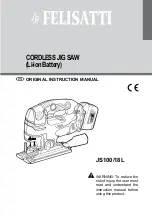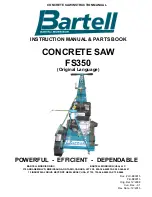
27
26
BKS 18BL
...........................4745 23 01...
...000001-999999
............................. 3800 min
-1
................................. 24
....................... 298x160 mm
............................... 190 mm
................................ 1,1 mm
................................ 1,7 mm
................................ 1,5 mm
................................. 30 mm
................................. 64 mm
................................. 46 mm
................................. 18 V
................................ 3,7 kg
................................ 3,7 kg
................................ 3,9 kg
................................ 3,9 kg
.............................. 3,95 kg
................................ 4,1 kg
...................... -18...+50 °C
....................L1815R ... L1890RHD
.................... AL1218... / BL1218...
................................. 80 dB (A)
................................. 91 dB (A)
............................ ≤ 2,5 m/s
2
................................ 1,5 m/s
2
ENGLISH
TECHNICAL DATA
CORDLESS CIRCULAR SAW
Production code.......................................................................................
No-load speed .........................................................................................
Blade teeth ..............................................................................................
Base plate dimensions (LxW) ..................................................................
Saw blade diameter .................................................................................
Sawblade thickness / setting max. ..........................................................
Tooth thickness / setting max. .................................................................
Tooth thickness / setting min. ..................................................................
Sawblade mounting bore ........................................................................
Cutting depth at 90°. ................................................................................
Cutting depth at 45°. ................................................................................
Battery voltage.........................................................................................
Weight according EPTA-Procedure 01/2014 (1.5 Ah) .............................
Weight according EPTA-Procedure 01/2014 (2.0 Ah) .............................
Weight according EPTA-Procedure 01/2014 (3.0 Ah) .............................
Weight according EPTA-Procedure 01/2014 (4.0 Ah) .............................
Weight according EPTA-Procedure 01/2014 (5.0 Ah) .............................
Weight according EPTA-Procedure 01/2014 (6.0 Ah) .............................
Recommended ambient operating temperature ......................................
Recommended battery types...................................................................
Recommended charger
...........................................................................
Noise/vibration information
Measured values determined according to EN 62841.
Typically, the A-weighted noise levels of the tool are:
Sound power level (Uncertainty K=3dB(A)) .........................................
Sound pressure level (Uncertainty K=3dB(A)) .....................................
Wear ear protectors!
Total vibration values (vector sum in the three axes) determined
according to EN 62841.
Vibration emission value a
h
Cutting wood ........................................................................................
Uncertainty K........................................................................................
WARNING Read all safety warnings, instructions, illustrations
and specifi cations provided with this power tool.
Failure to follow
all instructions listed below may result in electric shock, fi re and/or
serious injury.
Save all warnings and instructions for future reference.
CIRCULAR SAW SAFETY WARNINGS
Cutting procederes
Danger:
Keep hands away from cutting area and the blade.
Keep your second hand on auxiliary handle, or motor housing.
If
both hands are holding the saw, they cannot be cut by the blade.
Do not reach underneath the workpiece.
The guard cannot protect
you from the blade below the workpiece.
Adjust the cutting depth to the thickness of the workpiece.
Less
than a full tooth of the blade teeth should be visible below the
workpiece.
Never hold the workpiece being cut in your hands or across your
leg while cutting. Secure the workpiece to a stable platform.
It is
important to support the work properly to minimize body exposure,
blade binding, or loss of control.
Hold the power tool by insulated gripping surfaces, only when
performing an operation where the cutting tool may contact
hidden wiring.
Cutting accessory contacting a „live“ wire may make
exposed metal parts of the power tool „live“ and could give the
operator an electric shock.
When ripping always use a rip fence or straight edge guide.
This
improves the accuracy of cut and reduces the chance of blade binding.
Always use blades with correct size and shape (diamond versus
round) of arbour holes.
Blades that do not match the mounting
hardware of the saw will run eccentrically, causing loss of control.
Never use damaged or incorrect blade washers or bolt.
The blade
washers and bolt were specially designed for your saw, for optimum
performance and safety of operation.
Kickback causes and related warnings:
- kickback is a sudden reaction to a pinched, bound or misaligned saw
blade, causing an uncontrolled saw to lift up and out of the workpiece
toward the operator;
- when the blade is pinched or bound tightly by the kerf closing down,
the blade stalls and the motor reaction drives the unit rapidly back
toward the operator;
- if the blade becomes twisted or misaligned in the cut, the teeth at the
back edge of the blade can dig into the top surface of the wood
causing the blade to climb out of the kerf and jump back toward the
operator.
Kickback is the result of saw misuse and/or incorrect operating
procedures or conditions and can be avoided by taking proper
precautions as given below.
Maintain a fi rm grip with both hands on the saw and position your
arms to resist kickback forces. Position your body to either side
WARNING
The vibration and noise emission level given in this information sheet has been measured in accordance with a standardized test given in EN 62841
and may be used to compare one tool with another. It may be used for a preliminary assessment of exposure.
The declared vibration and noise emission level represents the main applications of the tool. However if the tool is used for diff erent applications,
with diff erent accessories or poorly maintained, the vibration and noise emission may diff er. This may signifi cantly increase the exposure level over
the total working period.
An estimation of the level of exposure to vibration and noise should also take into account the times when the tool is switched off or when it is
running but not actually doing the job. This may signifi cantly reduce the exposure level over the total working period.
Identify additional safety measures to protect the operator from the eff ects of vibration and/or noise such as: maintain the tool and the accessories,
keep the hands warm, organization of work patterns.
of the blade, but not in line with the blade.
Kickback could cause
the saw to jump backwards, but kickback forces can be controlled by
the operator, if proper precautions are taken.
When blade is binding, or when interrupting a cut for any reason,
release the trigger and hold the saw motionless in the material
until the blade comes to a complete stop. Never attempt to
remove the saw from the work or pull the saw backward while the
blade is in motion or kickback may occur.
Investigate and take
corrective actions to eliminate the cause of blade binding.
When restarting a saw in the workpiece, centre the saw blade in
the kerf and check that saw teeth are not engaged into the
material.
If saw blade is binding, it may walk up or kickback from the
workpiece as the saw is restarted.
Support large panels to minimise the risk of blade pinching and
kickback.
Large panels tend to sag under their own weight. Supports
must be placed under the panel on both sides, near the line of cut and
near the edge of the panel.
Do not use dull or damaged blades.
Unsharpened or improperly set
blades produce narrow kerf causing excessive friction, blade binding
and kickback.
Blade depth and bevel adjusting locking levers must be tight and
secure before making cut.
If blade adjustment shifts while cutting, it
may cause binding and kickback.
Use extra caution when sawing into existing walls or other blind
areas.
The protruding blade may cut objects that can cause kickback.
Lower guard function
Check lower guard for proper closing before each use. Do not
operate the saw if lower guard does not move freely and close
instantly. Never clamp or tie the lower guard into the open
position.
If saw is accidentally dropped, lower guard may be bent.
Raise the lower guard with the retracting handle and make sure it
moves freely and does not touch the blade or any other part, in all
angles and depths of cut.
Check the operation of the lower guard spring. If the guard and
the spring are not operating properly, they must be serviced
before use.
Lower guard may operate sluggishly due to damaged
parts, gummy deposits, or a build-up of debris.
Lower guard may be retracted manually only for special cuts such
as “plunge cuts” and “compound cuts.” Raise lower guard by
retracting handle and as soon as blade enters the material, the
lower guard must be released.
For all other sawing, the lower guard
should operate automatically.
Always observe that the lower guard is covering the blade before
placing saw down on bench or fl oor.
An unprotected, coasting blade
will cause the saw to walk backwards, cutting whatever is in its path.
Be aware of the time it takes for the blade to stop after switch is
released.
ADDITIONAL SAFETY AND WORKING INSTRUCTIONS
Wear ear protectors.
Exposure to noise can cause hearing loss.
Use protective equipment. Always wear safety glasses when working
with the machine. The use of protective clothing is recommended, such
as dust mask, protective gloves, sturdy non-slip footwear, helmet and
ear defenders.
The dust produced when using this tool may be harmful to health. Do
not inhale the dust. Use a dust absorption system and wear a suitable
dust protection mask. Remove deposited dust thoroughly, e.g. with a
vacuum cleaner.
Do not use saw blades not corresponding to the key data given in
these instructions for use.
It is necessary to select a saw blade which is suitable for the material
being cut.
Use only woodworking blades specifi ed in this manual, which comply
with EN 847-1.
The rated speed of the accessory must be at least equal to the
maximum speed marked on the power tool.
Accessories running faster than their rated speed can break and fl y
apart.
Do not use abrasion disks in this machine!
Do not fi x the on/off switch in the „on“ position when using the saw
hand-held.
Remove the battery pack before starting any work on the machine.
Do not dispose of used battery packs in the household refuse or by
burning them. ARG Distributors off er to retrieve old batteries to protect
our environment.
Do not store the battery pack together with metal objects (short circuit
risk).
Use only System GBS chargers for charging System GBS battery
packs. Do not use battery packs from other systems.
Never break open battery packs and chargers and store only in dry
rooms. Keep dry at all times.
Battery acid may leak from damaged batteries under extreme load or
extreme temperatures. In case of contact with battery acid wash it off
immediately with soap and water. In case of eye contact rinse
thoroughly for at least 10 minutes and immediately seek medical
attention.
Warning!
To reduce the risk of fi re, personal injury, and product
damage due to a short circuit, never immerse your tool, battery pack or
charger in fl uid or allow a fl uid to fl ow inside them. Corrosive or
conductive fl uids, such as seawater, certain industrial chemicals, and
bleach or bleach containing products, etc., can cause a short circuit.
WORKING INSTRUCTIONS
Adapt the feed speed to avoid overheating the blade tips.
SPECIFIED CONDITIONS OF USE
This cordless circular saw is intended to be used to cut lengthways and
mitre accurately in wood.
Do not use this product in any other way as stated for normal use.
EC-DECLARATION OF CONFORMITY
We declare under our sole responsibility that the product described
under “Technical Data” fulfi lls all the relevant provisions of the
directives 2011/65/EU (RoHS), 2014/30/EU, 2006/42/EC and the
following harmonized standards have been used:
EN 62841-1:2015
EN 62841-2-5:2014
EN 55014-1:2017
EN 55014-2:2015
EN IEC 63000:2018
Winnenden, 2019-02-21
Alexander Krug
Managing Director
Authorized to compile the technical fi le.
Techtronic Industries GmbH
Max-Eyth-Straße 10
71364 Winnenden
Germany
ENGLISH
Summary of Contents for BKS 18BL
Page 3: ...4 5 90 20 17 16 10 6 21 16 14 15 12 START STOP 8 ...
Page 5: ...8 9 1 4 2 5 3 6 1 2 EN 847 1 ...
Page 8: ...14 15 1 2 3 0 56 ...
Page 11: ...20 21 1 2 3 1 2 4 START STOP 1 2 1 2 45 0 ...
Page 12: ...22 23 3 1 2 4 max 64 mm 0 START 1 2 ...
Page 13: ...25 24 ...















































